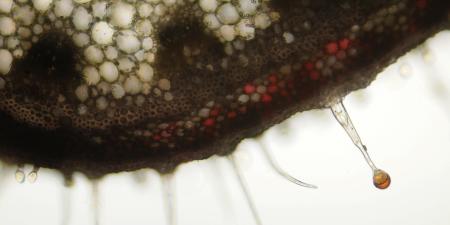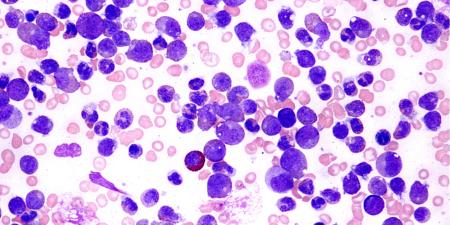Bioethics is a relatively young area of concern and field of inquiry, less than forty years old in its present incarnation—though many of the questions to which it leads are in fact ancient. In the mid-1960s, following the disclosure of several abuses here and abroad, ethical attention first focused on the use of human subjects in medical experimentation. Intense public discussion established the importance of voluntary and informed consent, and institutional arrangements were subsequently developed to protect vulnerable patients against the potentially excessive zeal of otherwise worthy experimenters.
This quotation is taken from the introduction by Leon R. Kass, MD, to a recently published anthology of readings on bioethics, entitled Being Human: Readings from the President's Council on Bioethics.1 The President's Council on Bioethics encompasses 17 distinguished scholars and editors, including PhDs, JDs, and MDs, from some of the most prestigious educational institutions in the United States. What most differentiates this anthology from similar publications, however, is the fact that excellent stories, poems, memoirs, and philosophical treatises have been selected by the editors to illustrate a variety of issues in bioethics. Arguably, a textbook of medical ethics could teach similar lessons, but stories and poems call forth in us that which is most human: our complex interconnectedness.
As a longtime instructor in literature and medicine, I am delighted to find here excerpts from the classics—Homer, the Bible, and Shakespeare—as well as selections from the autobiography of Frederick Douglass, part of a story by Perri Klass, MD, and many others. These selections are valuable because they illustrate medical ethics concerns in a way that is accessible to scholars and laypersons. Everyone loves a good story: this book has several of them. But bioethicists and medical practitioners interested in a deeper understanding of the complex human interaction between a researcher and his or her human experimental subjects can also turn to complete works of fiction.
A classic novel in the field of research ethics is The Doctor's Wife2 by Japanese author Sawako Ariyoshi (1931-1984). This story is based on the discovery by Japanese surgeon Hanaoka Seishu (1760-1835) of an effective anesthetic before any such breakthrough took place in the West. Ariyoshi has based her narrative on the records, diaries, books, and biography of Dr. Hanaoka Seishu but has added fictional characters, events, and dialogue. Informed consent and overzealous scientists are never mentioned directly in this historical novel, but these themes and characters are dramatized in a way that captivates our attention. We are guilty of anachronism if we attempt to place Ariyoshi's narrative in the framework of modern medical ethics, but we can learn much about the motivation and relationships of researchers and their subjects through this compelling story.
The plot centers on a poor Japanese family from a small provincial town who send their son Hanaoka (Umpei) Seishu to medical school in Kyoto for 3 years largely because his mother, Otsugi, has determined that he is destined to be a great man. Under her guidance, his sisters and other women in the family sacrifice their happiness to pay for his education. His mother also finds him a samurai wife, Kae, a 21-year-old innocent girl who, at first, is infatuated with her strong-willed mother-in-law.
After graduating from medical school, Umpei sets out to discover an anesthetic that will put a patient to sleep during an entire operation; the ambitious young doctor wants to be able to remove malignant tumors in breast cancer patients without killing the patient. He starts experiments to develop this anesthetic from mandarage (Datura alba Nees) and gives it first to stray cats and dogs. Then one of his sisters, Okatsu, develops breast cancer. Wishing to die, she asks her brother to give her an overdose of the anesthetic, but he refuses. Next, she asks him to operate on her without anesthetic, saying, "If I should die, I would still feel satisfied knowing that I might have been helpful to you."3 But he refuses because she is a blood relation. After Okatsu's death, their mother Otsugi offers herself as an experimental subject: "Everyone close to you, Umpei…except a fool, can see that your research would be complete if only you could test the drug on a person. I am the mother who gave birth to you, so I, more than anybody else, understand what you want to accomplish."4 Kae, the doctor's wife, knows her now-hostile mother-in-law is referring to her as the fool, so she proceeds to offer herself for the experiments, pleading, "Please try it on me"!4
After 10 years of animal experiments, the doctor chooses to try the drug on his mother, with the result that she falls into a deep coma. Umpei remains calm, as he explains to Kae that he has only put a little mandarage in his mother's drink; most of it is alcohol. She will sleep it off, he says. Next, the doctor tries a much higher dose on his wife, who suffers great pain and falls into a coma for 3 days: "Kae, however, was satisfied that she had outdone Otsugi and did not mind her weakened condition, although she did not recover her strength for some time."5 Her desire to compete for her husband's attention and to defeat her proud mother-in-law by tolerating greater physical pain and risk is strengthened when Koben, the daughter of Umpei and Kae, dies. After this event, Kae herself only wishes to die: "Having lost Koben, her own life seemed less significant, and the donation of her body to her husband's research seemed like a worthy action. Whatever her reasoning, she in fact craved the medicine….If only she could fall unconscious again!"6 Supervised by her husband, Kae ingests a large dose of the anesthetic and falls into a coma for 3 days. After a second experiment, Kae goes blind.
Having discovered and perfected the anesthetic, Dr. Seishu performs and teaches surgery on anesthesia and becomes a legend in his own time. At the end of the novel, Umpei's unmarried sister Koriku, who is dying, reflects aloud to Kae, "My brother became famous and people think you and Mother are wonderful."7 Koriku indicates that despite the success of his work, Dr. Seishu took advantage of the rivalry between his mother and his wife by pretending to ignore it so that he could make the leap from animal to human experimentation.
Several factors contribute to the doctor's success in using human subjects for his research: the women's rivalry; the women's inferior status; their depressive mental states and masochistic tendencies. Though they volunteered, the women could not have given informed consent, because the doctor did not communicate with them about the dose, nor did he himself know how much would be needed to produce general anesthesia with little-to-no harm to the patient. Doubtless, the 2 women observed how the cats and dogs suffered and died during the 10 years Dr. Seishu experimented on these animals, but they were so desperate for attention and recognition, and so depressed after their respective daughters' deaths, that they were willing subjects for the dangerous procedures.
Today, ethics committees and supervised experiments have improved the protection of vulnerable patients. One would certainly hate to think that Ariyoshi's story could happen now. However, her superbly crafted narrative leaves us wondering how bioethical principles can be enforced in the case of experiments on vulnerable people, such as prisoners, children, the mentally ill, and the elderly. The ever-present question is: what price must be paid for progress in medicine, and by whom?
References
-
President's Council on Bioethics.Being Human:Readings from the Presidential Council on Bioethics.Washington,DC: Presidential Council of Bioethics; 2003.
-
Ariyoshi S. The Doctor's Wife. Hironaka, W., Siller, A, trans-eds.Tokyo, Japan: Kodansha International; 1981.
-
Ariyoshi, 94.
-
Ariyoshi, 105.
-
Ariyoshi, 133.
-
Ariyoshi, 144.
-
Ariyoshi, 162.



